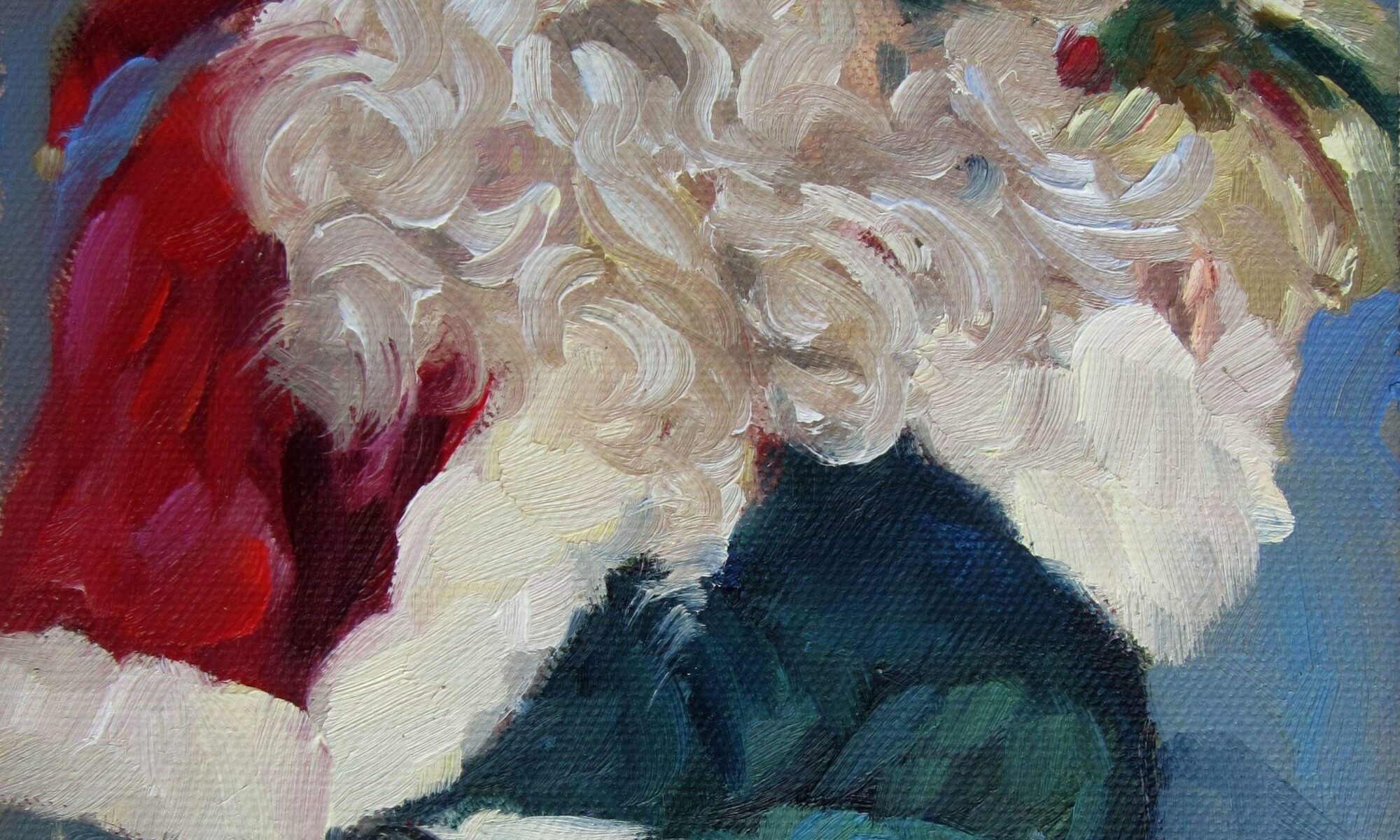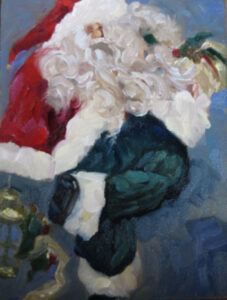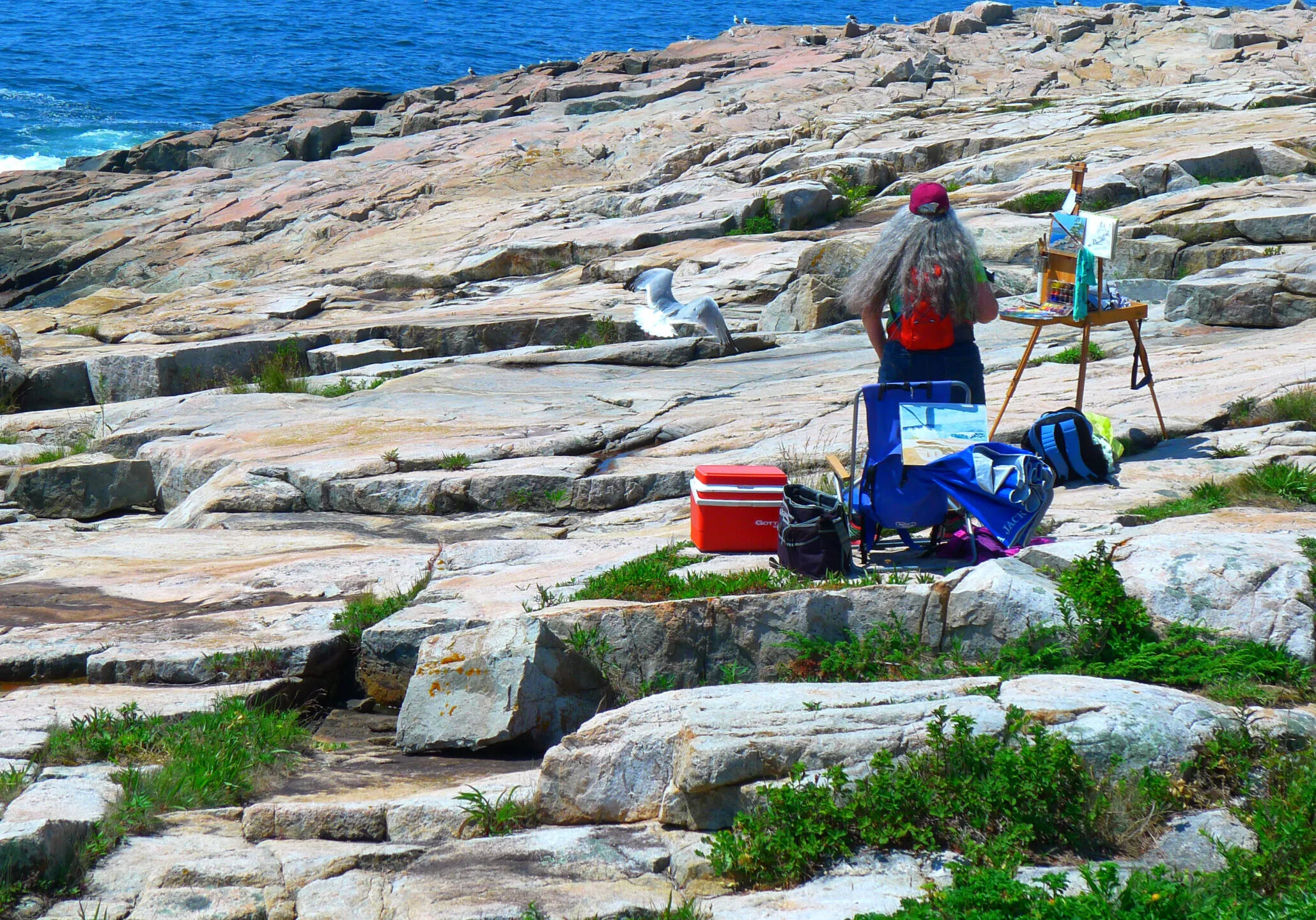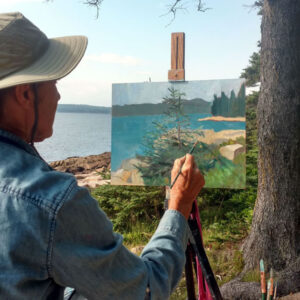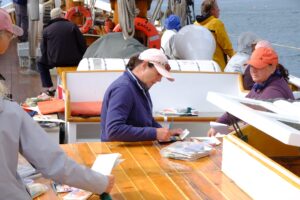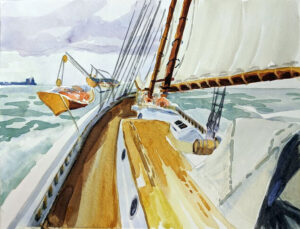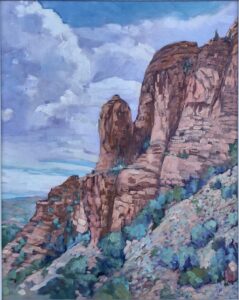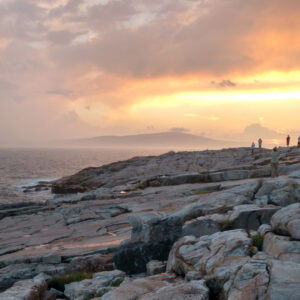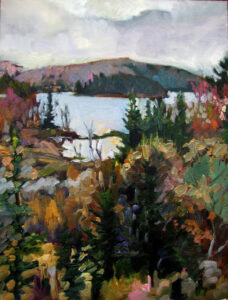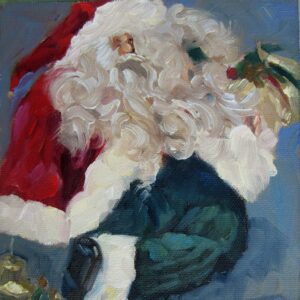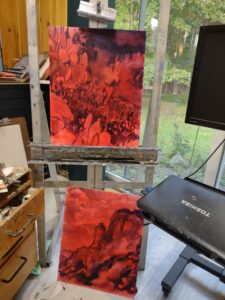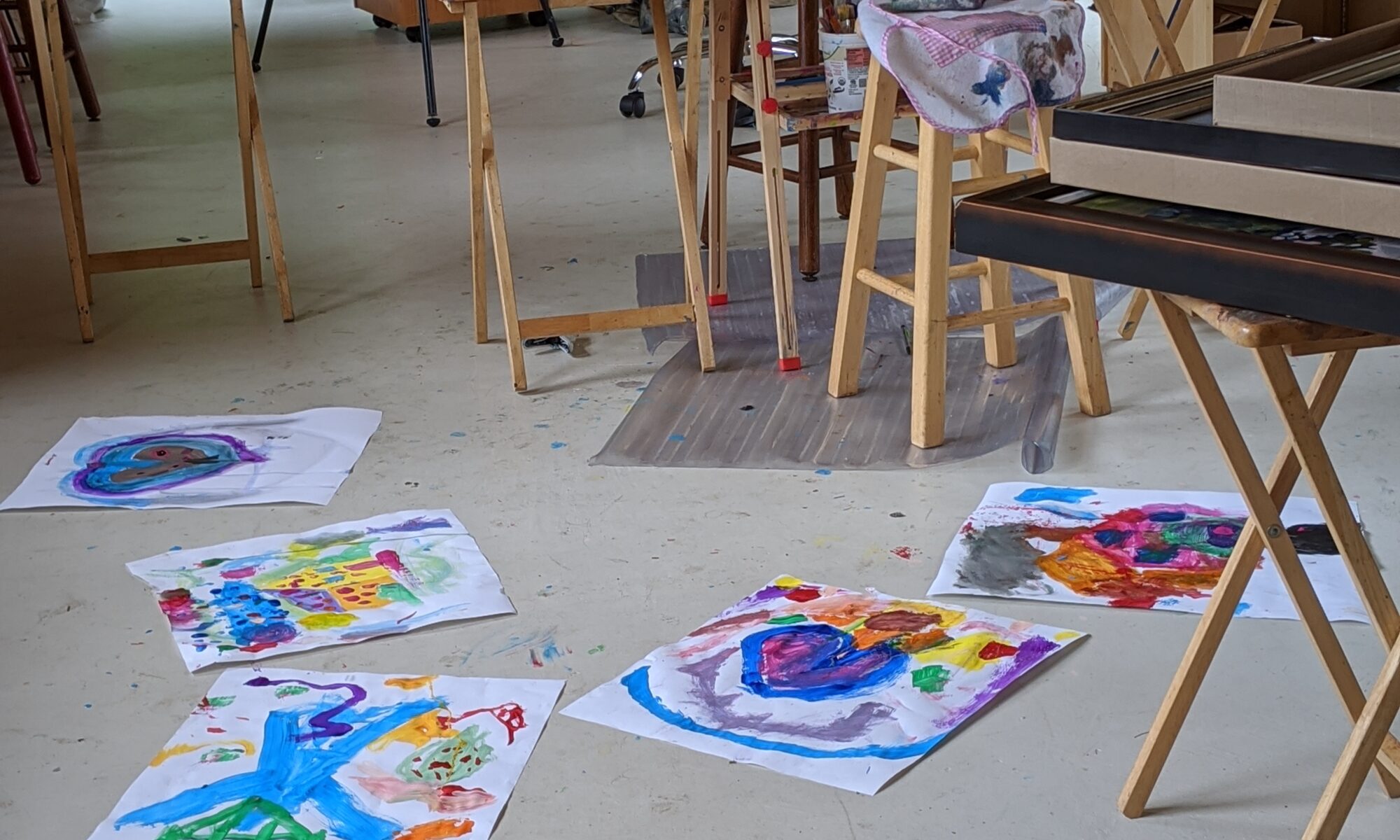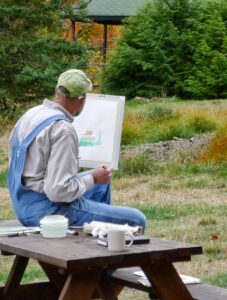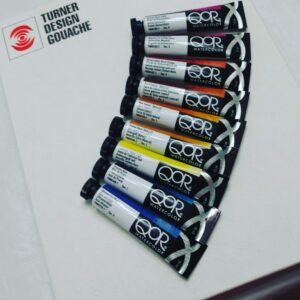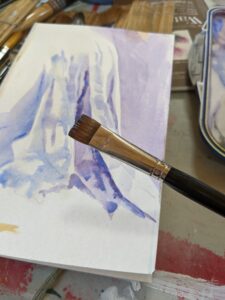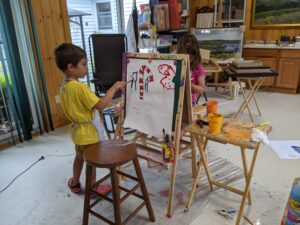Today I’m thankful for the people who support artists, so here’s a shopping guide that will make their holiday gift-buying easier.
Let’s talk about brushes:
Several years ago, my students bought me a set of Rosemary & Co. brushes. My biggest regret about my lost painting kit is that those brushes were a gift from people I love, but Bobbi Heath and Karen Ames have both sent me spare brushes. That adds another level of gratitude to my brush roll.
Brushes are where quality matters, but they’re pricey, so they’re where most artists flinch. Why not buy a Rosemary & Co. gift card? That means they’ll have to pull the trigger on a brush, as Rosemary doesn’t carry much else. Gift cards come in odd increments because it’s a British firm, but plan to spend at least $130 for it to be useful. They make oil, acrylic and watercolor brushes, so only pastelists need miss out.
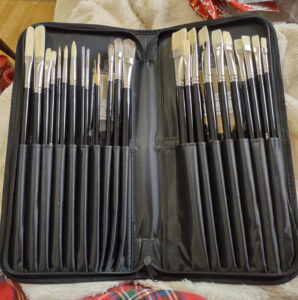
Isabey is a French company that makes very nice bristle brushes that stand up to hard use. If your artists have no big brushes, buy a bright, flat or round anywhere between a size 10 and 14. Those big boys are the ones artists never get around to buying.
It’s easy to wipe out tiny brushes. This small bright and even tinier round are perfect for detail. Princeton has rebranded these brushes as Snap! But they’re the same excellent quality that the series 9700 has always provided.
I have a collection of very expensive watercolor brushes but the ones I continually grab are Princeton Neptunes. This nifty travel kit would make any watercolor painter happy.
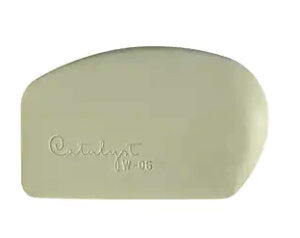
Eric Jacobsen, that incomparable mark-maker, got me a Princeton Catalyst W-06 wedge. You can’t be precise, so it’s a great tool for loosening up your brushwork. In fact, the whole series of these wedges are fun. They’re meant for any heavy-body paints, including oil, acrylic and encaustic.
If I could carry only one watercolor travel brush, it would be an Escoda Reserva Kolinsky-Tajmyr Pocket Brush. It’s compact, comes in a protective tube, and makes an outstanding range of marks. A close second at a lower price point are the Da Vinci Cosmotop Spin Travel Brushes. A hat tip to Heather Evans Davis for introducing me to them.
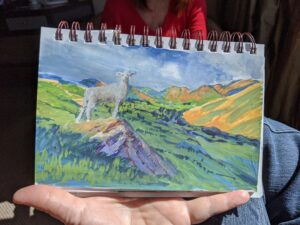
Gouache and other colorful things
Many painters are interested in experimenting with gouache, and for good reason-its results are completely on-trend. Schmincke Horadam is a fabulous, high-pigment brand, but a starter set runs a hundred bucks. Instead, you could make up a primary-color kit of Titanium White, Lemon Yellow, Scarlet (Pyrrole Red), Helio Blue (Phthalo), and Ivory Black. That’s everything necessary for limited-palette painting. M. Graham has a primary-color starter set that’s significantly less expensive and nearly as luscious.
A great combo for mixed medium experimentation is oil paint and oil pastels. Sennelier is the clear quality winner in oil pastels. A landscape or iridescent starter kit will give your artist enough information to know if he likes the combination.
Similarly, you can add chalk pastels to watercolor or acrylic paintings. My preferred soft pastel is Unison; a starter color kit is enough to experiment with. I love NuPastel for hard pastels; a set of 24 will provide a full range of color options. Of course, watercolor pencils are fun for everyone. I like Staedtler Karat Aquarell and Faber-Castell Albrecht Dürer Magnus, which are fatter than usual.
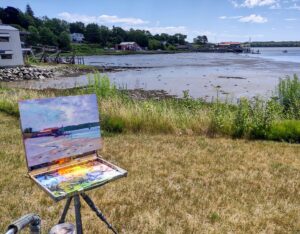
Easels: the good, the bad, and the ugly
If your painter struggles with a knock-off Gloucester-style easel, you can make him or her ecstatic by buying the Take-It Easel, which costs twice as much and is worth every penny. After breaking one of the cheap ones and then buying a second one that arrived warped, I shelled out for the real thing. I’m glad I did.
As a teacher, I see a lot of pochade boxes and easels, and can steer you away from the bad ones as well as recommend good ones. I’ve had a version of the Mabef Field Painting Easel for decades and recommend it highly as a good starter tool for plein air. It has a swing head so can be used for oils and watercolor. The Leder Easel is simple, effective and light-weight. Tell Ed I sent you and he’ll give you 10% off (and, no, I don’t get a spiff for that).
I use an EasyL Pro on a carbon-fiber Manfrotto tripod with a ball head. It is very lightweight and has survived incredible abuse (including saltwater), but it’s not a cheap combination (and thank goodness it wasn’t in my painting kit when that went missing.) I’m getting an EasyL Lite soon, which will replace my home-built aluminum pochade box for backpacking.
For studio work, I swear by the Testrite #700 Professional Studio Easel. I use its little brother, the Testrite #500, for students. The difference between the two models is in the maximum size canvas they’ll accept. They’re aluminum so they don’t warp or crack. I’ve had them for decades. The only maintenance I’ve ever done was replace parts that wandered off.
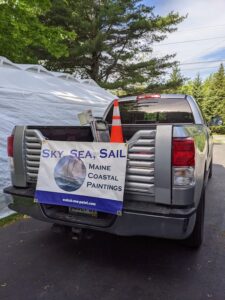
Miscellany
The danger of “park and paint” plein air is other drivers. One of the nicest gifts I ever received was a pair of safety cones. This set of collapsible ones are reflective, come with LED lights, and will fit easily in a car trunk.
I have an Artwork Essentials umbrella, but I’m equally impressed with the Shade Buddy. However, for many situations, I find a beach umbrella works just as well.
I have more than one taboret cabinet but my current favorite is this simple six drawer rolling cart. Mine sits under my teaching desk and holds all the art supplies I might need while teaching. Watch for discounts; I got mine on a Woot daily deal.
If your artist is starting to frame and sell work, the Fletcher FrameMaster point driver will save him or her a world of aggravation. Mine is decades old and still works fine.
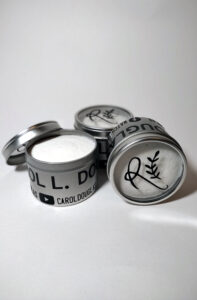
I’d be remiss in not mentioning Rowan Branch Brush Soap. My daughter Mary makes it for me, and I’ve shared it with enough other artists to know that it really works.
This page contains affiliate links for some but not all products. If you choose to make a purchase after clicking a link, I may receive a commission at no additional cost to you. Thank you for your support!
My 2024 workshops:
- Painting in Paradise: Rockport, ME, July 8-12, 2024.
- Sea & Sky at Schoodic, August 4-9, 2024.
- Find your authentic voice in plein air: Berkshires, August 12-16, 2024.
- Art and Adventure at Sea: Paint Aboard Schooner American Eagle, September 15-19, 2024.
- Immersive In-Person Workshop: Rockport, ME, October 7-11, 2024.

